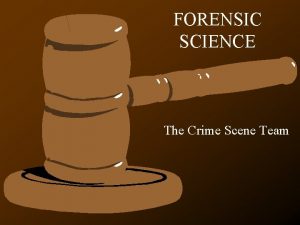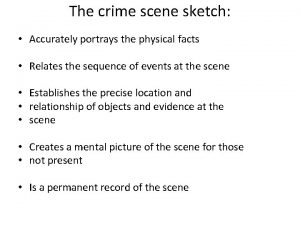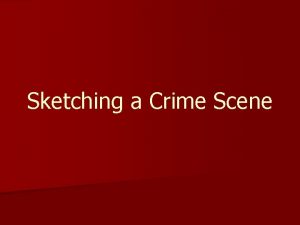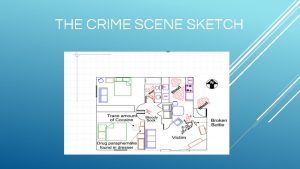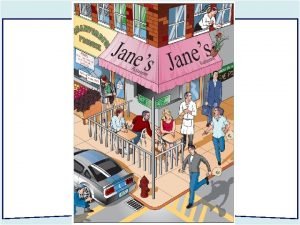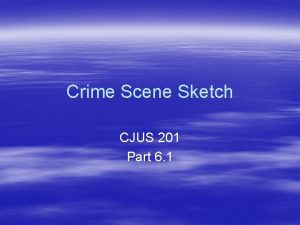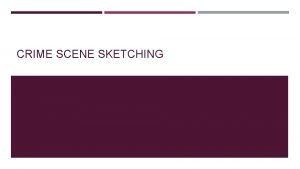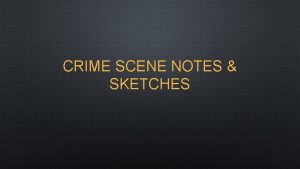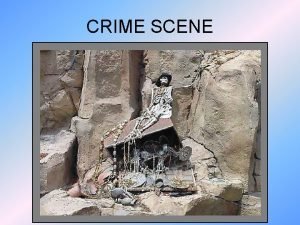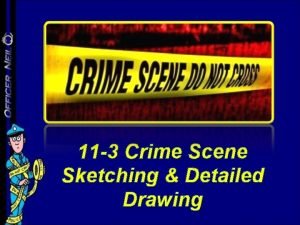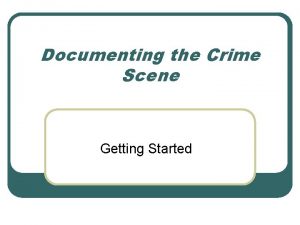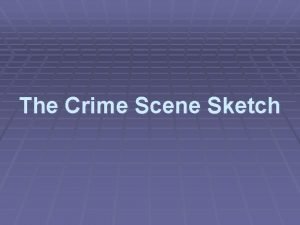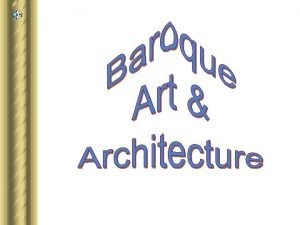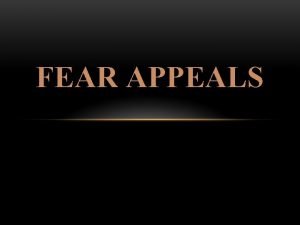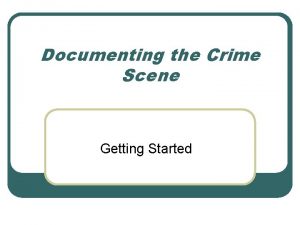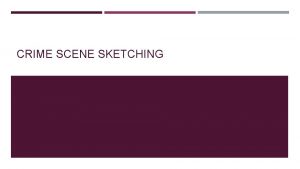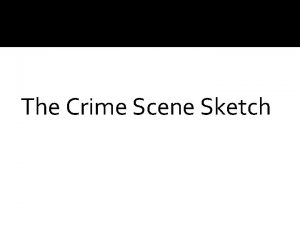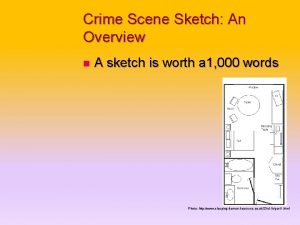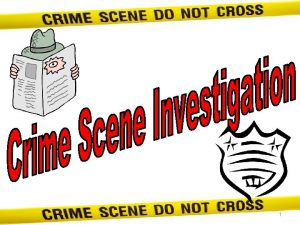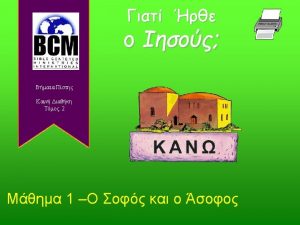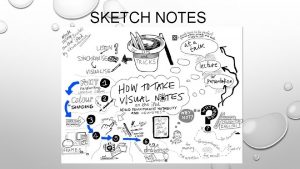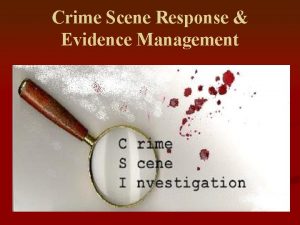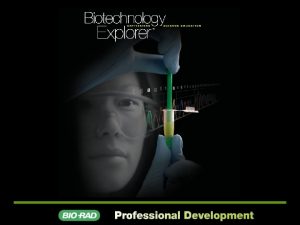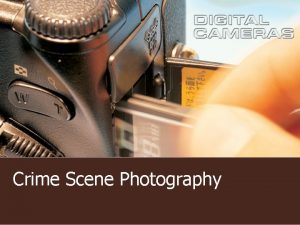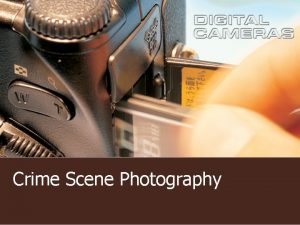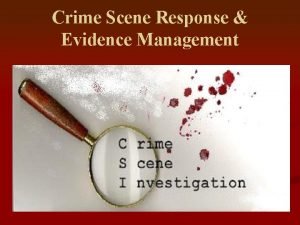The crime scene sketch Accurately portrays the physical

















- Slides: 17

The crime scene sketch: • Accurately portrays the physical facts • Relates the sequence of events at the scene • Establishes the precise location and • relationship of objects and evidence at the • scene • Creates a mental picture of the scene for those • not present • Is a permanent record of the scene

A crime scene sketch assists in: • 1) Interviewing and interrogating persons • 2) Preparing an investigative report • 3) Presenting the case in court • The sketch supplements photographs, notes, plaster casts and other investigative techniques. • Two types of sketches • Rough sketch • Finished or scale sketch

The Rough Sketch • The rough sketch is the first pencil-drawn outline of the scene and the location of objects and evidence within this outline. • Usually not drawn to scale • Although distances are measured and indicated in the sketch • Sketch after photographs are taken and before anything is moved. • Sketch as much as possible.

Sketching Materials • Paper • Pencil • Measuring tape • Ruler • Clipboard • Eraser • Compass

Steps in Sketching the Crime Scene • Observe and plan • Measure distances • Outline the area • Locate objects and evidence within the outline TRIANGULATE!!! • Record details • Make notes • Identify the sketch with a legend a scale

Measure and Outline Area • Measure from fixed locations • Walls • Trees • Telephone poles • Corners • Curbs • Outlets • Any Immovable Object

Measure and Outline Area • North should be at the top of the paper. • Determine Scale • Take the longest measurement at the scene and divide it by the longest measurement of the paper used for sketching.

Plot Objects and Evidence • Plotting methods are used to locate objects and evidence on the sketch. • They include the use of: • Triangulation

Triangulation • Common in outdoor scenes • Uses straight-line measurements from two fixed objects to the evidence to create a triangle with evidence in the angle formed by two straight lines

• • • • • • The student will be able to summarize a process for preparing a crime scene investigation A. Organizing a plan of action 1) Mentally reconstruct the crime based on: a) Information from the responding officer (s). • Your best source for initial information b) Quick observation/scan of the scene. a) Physical evidence that is in plain view. Based on a mental reconstruction, establish an organized plan of action. Basic guideline include: 1. Assign one person to be in charge. 2. Establish a command post. 3. Task assignments should be disseminated in writing Verbal direction may be misinterpreted or simply disregarded 4. Personnel given assigned tasks must be made aware of the specifics of their assignments; no assumptions can exist in this area. 5. Trading of assignments should not to permitted without authorization by the officer in charge. 6. Utilize a systematic checklist or other method to insure a duplication of job effort is avoided. 7. Make assignments concurrent with the aptitude and training of the personnel involved.

Guideline for conducting a crime scene search. • 1. Approach scene • �The direction and location you approach the scene from should cause as little disturbance to the scene as possible. • 2. Secure and protect • �Insure that no unauthorized persons are permitted to enter the scene and insure no evidence is removed prior to being properly documented and collected. • 3. Preliminary survey • �STOP and look at the scene, start evaluating what steps you need to take.

Establishing a “chain of custody. ” • �A record of all individuals who handle the evidence, as well as any details of of events. • �Documentation should begin during the preliminary investigation. • �Ensure that evidence tags are created. • �Each time the evidence exchanges possession from one person to another, or moves from one location to another, the investigator must record this transaction. • “chain of custody. ” • �It is critical to record all pertinent information possible and maintain the chain of custody.

• • • Measure and Outline Area z A steel tape is best { It doesn’t stretch z Use conventional units of measurement {{ Centimeters { Meters

• • • Conducting a final survey of the crime scene. A final “walk through” of the crime scene. It ensures that evidence has been collected and scene has been processed prior to release. Ensures that evidence, equipment, or materials are not inadvertently left behind and dangerous materials or conditions have been reported and addressed.

This collaboration helps in following ways: • 1. Determine what evidence was collected • 2. Discuss preliminary scene findings with team members. • 3. Discuss potential technical forensic testing, crime laboratory, storage facility, and the sequence of tests to be performed. • Good opportunity for investigators and other responders to ensure that the crime scene search is complete. • Allows law enforcement officials to prepare a press release or • public news conference, if necessary. • Allows the investigator (s) in charge to make special requests and to remind all responders of maintaining confidentiality of case.

The main reasons for using crime scene sketches. • 1. To provide a permanent record of conditions otherwise not easily recorded (i. e. , distance, photography, and movement of suspect). • 2. To reconstruct the crime scene. • 3. To record the exact location and spatial relationships between pieces of evidence and the surroundings. • 4. To help refresh the investigator’s memory. • 5. To help corroborate testimony of witnesses. • 6. To eliminate unnecessary and confusing details. • 7. Can be enlarged by an artist in order to be as an exhibit during a courtroom testimony.

The crime scene sketch should include the following information: • �Investigator’s complete name and rank. • �Date, time, type of crime, and assigned case number complete name of other officers assisting in the making of the sketch (measuring, etc. ). • �Address of the crime scene, its position in a building, • landmarks, and so on. • �Scale of the drawing (if no scale, that should be indicated by printing “not to scale. ”)
 Corpus delicti
Corpus delicti A crime scene sketch should include
A crime scene sketch should include Crime scene rough sketch
Crime scene rough sketch Cross projection method sketching
Cross projection method sketching Crime scene
Crime scene Cross projection sketch crime scene
Cross projection sketch crime scene Scene
Scene Crime scene notes
Crime scene notes Cross projection sketch
Cross projection sketch Corpus delicti
Corpus delicti Crime scene sketching
Crime scene sketching Sketch of locality in crime scene
Sketch of locality in crime scene Exploded cross projection sketch
Exploded cross projection sketch Portrays the carefree life of the aristocrats
Portrays the carefree life of the aristocrats A television commercial portrays a terrible automobile
A television commercial portrays a terrible automobile Gwendolen portrays victorian qualities of being
Gwendolen portrays victorian qualities of being Sketch all serious crime and crash scenes:
Sketch all serious crime and crash scenes: Crime scene factoring and quadratic functions answer key
Crime scene factoring and quadratic functions answer key
